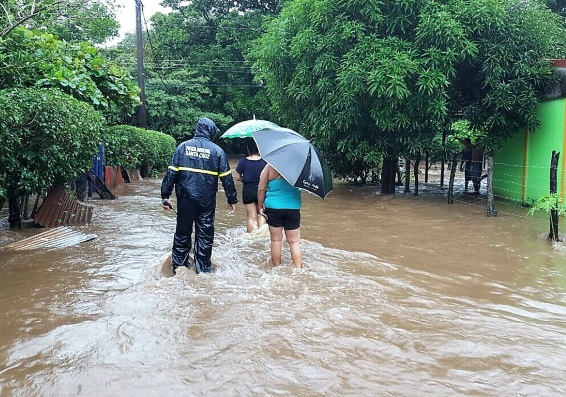Here in Surfside, Costa Rica we have two seaons. Warm and rainy or hot and dry.
Predicting the weather here is simple for the most part. From May through to November we can expect to have rain showers any day, usually for a few hours late afternoon or overnight with heavy rains in late September through mid October.
From December through April we expect things to get hot and dry with March and April being the standout months for heat, averaging 35C and little to no chance of rain.
While this is considered the general pattern in the Playa Potrero area it is similar throughout most of the Pacific Coast of Costa Rica. The northern part of the Pacific coast such as areas around La Cruz get more rain, cooler temperatures with an extended rainy season.
The debate over the start of rainy season is a topic of conversation throughout the region. It can happen at any time in April, as it did last year, and continue into December. The longer the season the less likely we usually have severe downpours.
This year we may get rain any day, but there is a chance it may not happen until June. Some blame the weather on El Nino, described as the warm phase of the El Niño–Southern Oscillation associated with a band of warm ocean water that develops in the central and east-central equatorial Pacific. Other years it is due to La Nina. Some blame it on Climate Change.
Those who warn of the coming ice age and point to a trend in global cooling are usually more vocal following a La Nina season, while those who warn of global warming tend to be more prevalent following El nino periods.
We can expect to hear a whole lot from the climate alarmists this year if the El nino effect lasts into July.
El Nino events see the Pacific Ocean up to 3C warmer than normal, and during La Nina, the other part of the cycle, the ocean is up to 3C colder. Temperatures around the world increase by about 0.2C during El Nino, and fall about 0.2C during La Nina.
Currently scientists are noting the Pacific Ocean temperatures are higher than average indicating an El Nino effect where the Pacific could be 3C warmer than normal. The oceans can also be 3C colder during La Nina periods. The higher the temperature shift from average the more chance of extreme weather patterns.
In any case, for those who have not experienced the extremes of the rainy or green season, we have some advice.
- Take time now to do some maintenance around the house.
- Clear the gutters which are often full of leaves from the dry season.
- Clear the drainage culverts in front of your property so rain water can get to where it needs to go
- Eliminate places where water can accumulate or better yet install something to contain the rainwater for irrigation during the dry season.
- If your home is in need of exterior repairs, do it now or make an appoiintment with a local contractor before they are busy dealing with emergencies.
- Have some backup lights or flashlights with new batteries for the days when the power goes off.
- The power will go off.
- Have a spare tank of propane on hand if you have a gas stove or bbq.
We may not experience any extreme weather, but we might.
Be prepared and enjoy it. It's part of living in Costa Rica.










